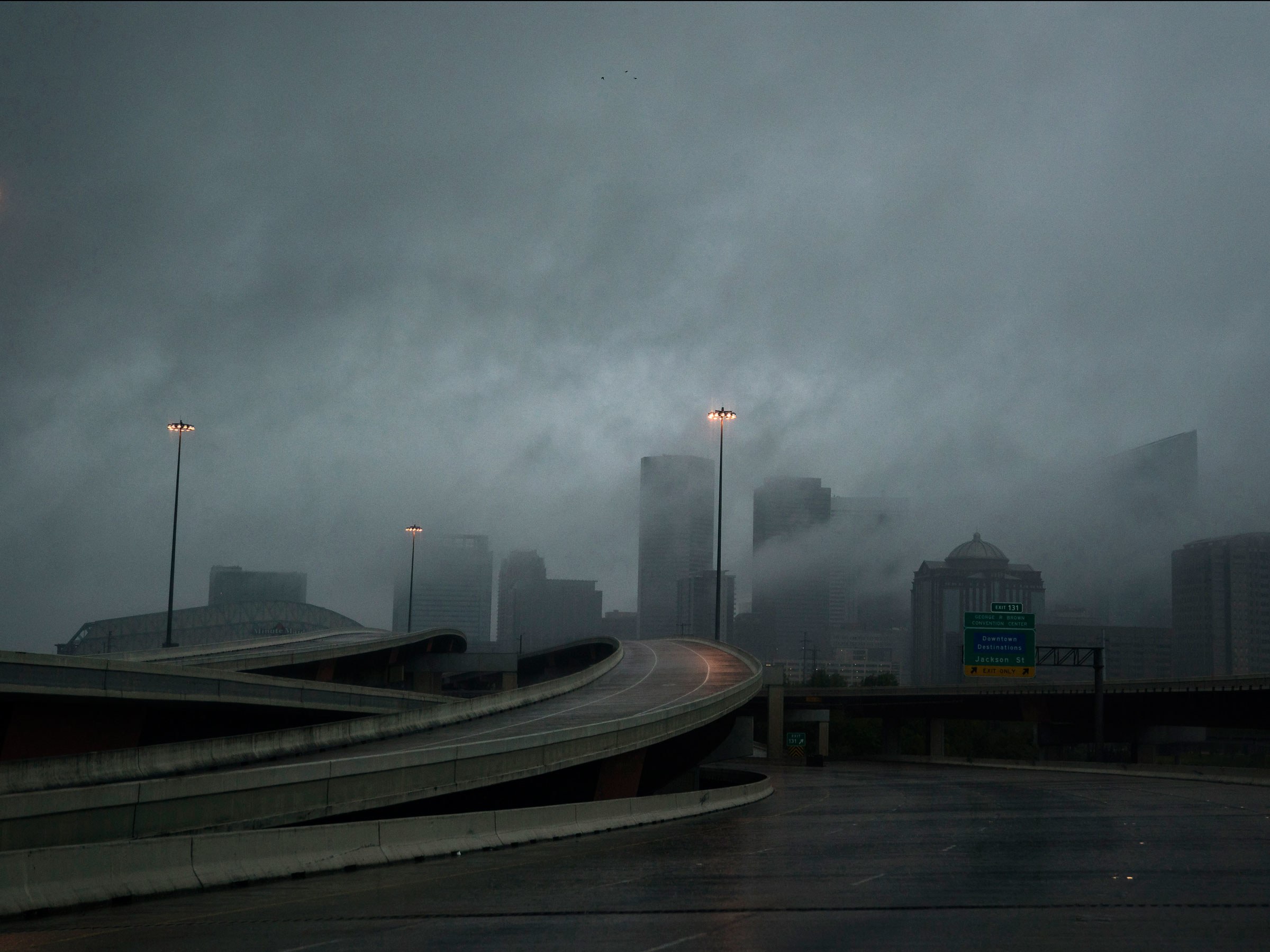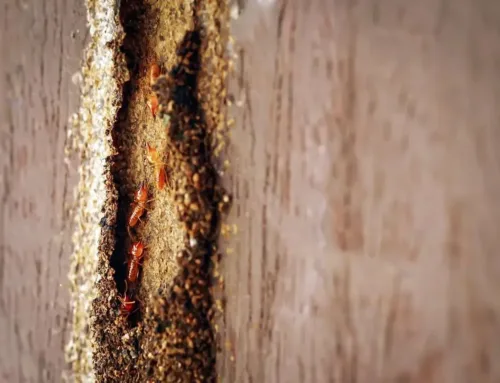Has a hurricane struck your area? Here are 25 ways to see your clients through the disaster and resources to give them after the storm.
Keller Williams, REMAX, Realogy, and other big players in the real estate industry have stepped up to aid communities recovering from Hurricane Harvey in Texas. As communities come together to rebuild after the storm, Florida and its residents are only beginning to feel the wrath of Hurricane Irma.
While solo agents and small real estate teams may not have the resources or manpower to send in trucks, boats and other major relief efforts like Keller Williams and other large brokerages, there is still plenty you can do to help your clients and their families weather the storm.
Here are 25 ways you can make an impact today

Before It Hits
#1 Listen to NOAA Weather Radio
The National Oceanic and Atmospheric Administration (NOAA) Weather Radio is a nationwide network of stations that broadcast weather from the nearest National Weather Service station. You can also follow warnings, watches, and forecasts 24/7.
Of course, you probably have your own favorite online new entities to follow, but tuning in to these official broadcasts can help guide the rest of your news gathering experience.
#2 Make Contact With Your Clients
As a community expert and leader, you shouldn’t hesitate to get in touch with your past, current, and even future clients.
Send a text message, make a phone call, or shoot over a quick email.
If you clicked the green button above, you’ll have a free PDF resource to download and include when you contact them, but at this point you can simply let them know that you’re thinking about them.
Whether you’re a seller’s or buyer’s agent, you’ve already made a significant difference in their lives and can continue to be a pillar for them during this uncertain and scary time.
#3 Benefits Of Flood Insurance
Other than figuring out if they’re living in an evacuation area, residents will be concerned with possible flood damage from the storm.
What they may not know is that home insurance doesn’t usually protect against flooding.

While flood insurance can be costly, it can also save a home.
Whether or not your clients are interested in purchasing flood insurance, the best thing you can do is give them the proper knowledge and resources to explore their options.
You might even know an insurance agent you can put them in touch with to start the process.
Take some time to answer these questions from FEMA and then pass your answers onto clients:
-
Does my community participate in the National Flood Insurance Program?
-
What flood zone do I live in? What is my property’s flood risk?
-
Do I qualify for a Preferred Risk Policy?
-
What will and won’t be covered?
-
How can I reduce the cost of my flood insurance?
-
Are there additional expenses or agency fees?
-
Will my policy provide Replacement Cost Value or Actual Cash Value—and what’s the difference between the two?
-
Who should I call if I have a flood claim?
#4 Retrofit Homes For Flood And Wind Damage
You can also share this Homeowner’s Guide To Retrofitting from FEMA.
#5 Repair and Reinforce
Empower your clients to protect their homes to the best of their abilities. Tell them to take note of loose shingles, leaks and any structural issues that could increase storm damage.
Owners should also look at the surrounding landscape and trim trees to remove any branches that may blow away in a strong wind.
Of course, storm drains and gutters should also be properly cleaned so water can be channeled away from the home as much as possible.
#6 Secure Important Documents
Make sure your clients know what documents they should keep with them, whether they’re leaving home or staying put until after the storm.
They should start by compiling all necessary documentation and creating digital files.
Then, the original copies of all documents should be placed in a waterproof bin for safe storage.
AARP recommends securing these documents:
- Personal: Birth and marriage certificates, divorce decrees, passports, diploma and military documents, Social Security card, and photocopies of your driver’s license and the front and back of all credit cards. Also include phone numbers of friends and relatives, because numbers stored on your cellphone may be inaccessible if its battery dies and you can’t recharge.
- Home and property: Home deed, mortgage and closing statements; car titles; insurance policies or at the minimum, policy number and contact information for your agent and insurer; appraisal documents for jewelry and other valuables.
- Estate: Your will, executor and estate planning paperwork, including names and phone numbers.
- Medical: Medicare or health insurance cards, prescription records (especially for medications for chronic conditions such as diabetes and asthma), and contact information for your doctors.
- Financial: Stock and bond certificates; IRA or 401(k) account numbers; bank statements; and tax records, including W2s and important receipts.
#7 Evacuation Zones
These resources will be valuable for those who are hunkering down to ride out the storm, as well as for those evacuating the area.
Evacuation zones were one referenced by the hurricane storm category, but are now named by surge zones – such as A, B, C, and D.
Check out if any of your farm areas fall into an evacuation zone. This should give you a good idea of any clients who will be forced to evacuate and also if any of your current listings are at risk.
#8 What To Take
Maybe you yourself are having to evacuate. Even if you’re staying put, encourage your network to prepare an emergency kit.
Here are some items to include in a basic kit from Weather Underground:
-
Water, one gallon of water per person per day, for drinking and sanitation
-
Food, at least a three-day supply of non-perishable food
-
Battery-powered radio and a NOAA Weather Radio with tone alert and extra batteries for both
-
Flashlight and extra batteries
-
First Aid kit
-
Whistle to signal for help
-
Infant formula and diapers, if you have an infant
-
Moist towelettes, garbage bags and plastic ties for personal sanitation
-
Dust mask or cotton t-shirt, to help filter the air
-
Plastic sheeting and duct tape to shelter-in-place
-
Wrench or pliers to turn off utilities
-
Can opener for food (if kit contains canned food)
#9 Resources For Pet Owners
Homeowners will likely have a plan in place for how they intend to get themselves and their families to safety until after the storm, but what about family pets?
In a crisis situation, owners may lose track of or even overlook their furry companions, so encourage them to have a plan in place for pet evacuation and storm safety during a disaster situation.
Just as each person in the family should be equipped with an emergency kit, so should all pets.
You can direct owners to this article by Your Local Security to ensure pets are protected.
#10 Back Up Electronics
Majority of every day electronics were not designed to withstand water damage. The bright side here, is that they are all more or less easily replaceable.
What’s not replaceable, is the valuable data they hold.
If your clients need assistance backing up their hard drives, share this complete guide by How To Geek with them.
#11 Where To Stay
While the hope may be that your clients can head to safety in the homes of friends and relatives, many people have been displaced after Hurricane Harvey and the same will happen with Irma.
Companies like Airbnb are encourages hosts to offer up cost-free rooms to those seeking refuge from Irma and shelters continue to open their doors to those in need.
Whether you’re in Texas, Florida, or somewhere between, you are in a wonderfully unique position to help guide clients towards both temporary and more permanent housing accommodations.
#12 Capture Before Photos Of Home
Ask sellers and homeowners to take detailed pictures of their property prior to the hurricane. This is going to make assessing damage after the storm much easier and less frustrating.
During The Hurricane
#1 Revise Your Market Listings
While you’re riding out the worst of things, keep busy by putting together a new market listing for those who’ve lost their homes in the hurricane. Of course, it may be difficult to assess the actual damage until after the storm, but you can still start compiling a list of properties and even rentals to show clients.
#2 Create A List of Local Resources
This is also a good time to hop on your blog and start gathering some resources for your community. Food banks, shelters, volunteer networks, childcare, veterinary aid…etc. No one will know what services to offer up better than you.
#3 Use Social Media To Keep Your Audience Informed
You can share your blog on Facebook and continue to update your area in real-time via social media. Any of the tips we’ve given up to this point can be shared daily on your social media profiles.
Create a safe space for people to get and share information and resources.
#4 Join Housing Support Groups On Facebook
Residents who have experienced massive flooding or have lost their homes will be in need of immediate housing.
Houses After Harvey is a Facebook group for agents and management companies created to assist those impacted by the storm in Houston. Agents are actively listing homes that were not damaged by flooding, or offering up rental properties to ease the transition for those who have lost everything.

Not seeing a group for your area? Create one and invite other community experts to join in!
#5 Be Available For Client Outreach
Depending on your personal circumstances, try and be available to followup with clients that reach out to you. Maybe they’ve responded to your initial contact or have started to interact with you on social media.
As long as it doesn’t cost too much emotional labor on your part, have conversations with them and keep in touch.
#6 Begin Crowdsourcing and Collecting Donations/Care Packages
If you’re still safe and dry, you can also start pooling donations for the neighborhoods that were hit hardest by the storm and even make small care packages for the clients you know will be struggling to recover.
You don’t have to do this on your own either. Get in touch with local businesses and other community experts and work together to provide relief donations for the greater community.
#7 Make A Contribution To Local Relief Organizations
If you don’t have the means to gather donations, you can still give back to your community during this time by making a donation or signing up to volunteer with a local trusted charity. Plus, you can spread the word about the organization and your involvement to get other folks involved, too!
After The Storm
#1 Feet On The Ground
First thing’s first, make sure that you and your family are taken care of.
If you’re in a stable place, it’s time to roll up your sleeves and join your local neighborhoods to help rebuild your community.
If you need more ideas on how to get involved, check out this post on Inman.
#2 Follow Up With Clients And Leads
Once the dust settles and the clouds clear, you can really start engaging with your clients. Pay them a friendly visit if it’s appropriate, or follow up via phone, text message, or email.
Alternatively, if you’ve been connecting with your community through Facebook you can reach out to clients and leads with a quick message.
#3 Home Inspection
Remember those Before photos you had your clients take? Here’s where they come into play.
Have clients first take all new photos of their property after the storm. They can make notes of obvious damages, but they should be able to compare both sets of photos to get a good idea of what damages occurred. This will be especially helpful if they plan to meet with a home insurance agent.
#4 Provide New Listings And Housing Accommodation Options
Hopefully you’ve found a Facebook group to post leads and listings in.
You should now also create a listings page specifically for the homes you have to offer after the storm.
Plus, if you know of any other housing options, include those on your website as well.
LeadSites Bonus Tip:
Use Paths to send your leads exactly where they need to go!
#5 Share Your Story
A hurricane impacts everyone. Don’t be afraid to share your storm experience with your network. And encourage others to do the same with you. Overcoming a natural disaster together can only deepen your bond within the community.
#6 Give Them This Resource Guide
Here are 5 steps your clients can take to begin rebuilding their homes and lives. You can print this to hand out while you volunteer in the community, mail it, or put it in an email.
Our thoughts are with all of you during this time!
Owner & Operator,
Chad Hett
The Elite Group
Largest Home Inspection Company in North America
Best Selling Author “Secrets Of Top Producing Real Estate Agents: And How To Duplicate Their Success.”






Article is well worth reading and forwarding to our friends, clients and contacts. Thank you.